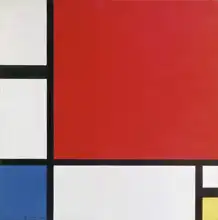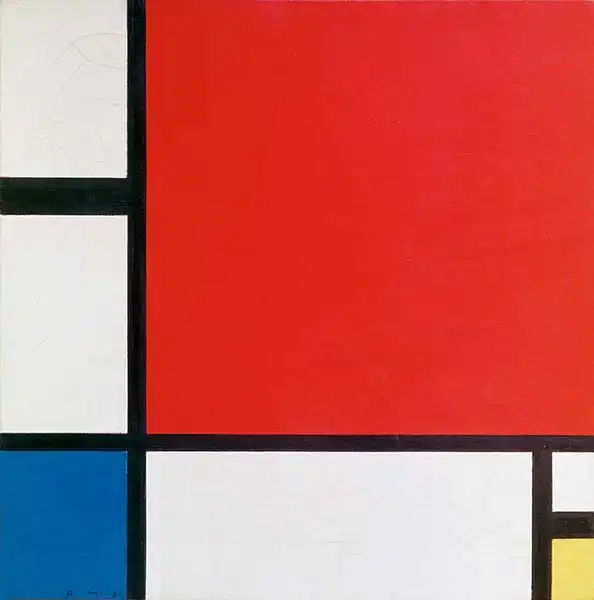About this finishing
Print. The image is printed on the top quality 10-ink HP Z9PS printer on HP matte 270 g / m2 paper. You can choose any size to an accuracy of 1 cm. A margin of 5 cm around the image is added to the size of the motif.


You can find a detailed description about our finishings
here.
Composition_II_in_Red,_Blue,_and_Yellow
Date:
1930Medium:
oil on canvasDimensions:
46 x 46The picture shows an abstract image consisting of geometric shapes. The main element consists of thick black rectangular lines forming a grid that separate the different coloured areas. The areas are filled with primary colours: red, blue and yellow, and also white. The style of the painting is reminiscent of the work of Dutch artist Piet Mondrian and his style of Neo-Plasticism, which is characterized by the use of simple geometric shapes and primary colors.
This description was created by artificial intelligence, please be indulgent.
Mondrian painted picture Composition_II_in_Red,_Blue,_and_Yellow in 1930. Prevailing color of this fine art print is vivid and its shape is square. Original size is 46 x 46. This image is printed on demand - you can choose material, size and finishing.
Piet Mondrian (1872-1944) Painter. Despite being from a family of drawing teachers, he was initially drawn to a priestly life. At last, his uncle brought him to painting as he had enrolled Mondrian at the Academy in Amsterdam. Mondrian experimented in his painting. His early works bear a clear inspiration from
impressionism. At the 1911 exhibition in Amsterdam, he met with the newly beginning style of
Cubism, of which he became very fond. Through continuous painting of the same object (
Tableau I), he tried to capture its true nature. For three years, he lived in Paris, but with the beginning of World War I, he returned to Holland. He did not remain long, and again returned to Paris, where he created very abstract images -
Duinlandschap. His greatest fame, paradoxically, came in the USA, where he had to move under the threat of Nazism in 1938. It is said that he worked so hard that he had blisters on his hands from paint brushes. Through his geometricism he influenced many of his successors. Piet Mondrian died 1. 2. 1944 pneumonia.


